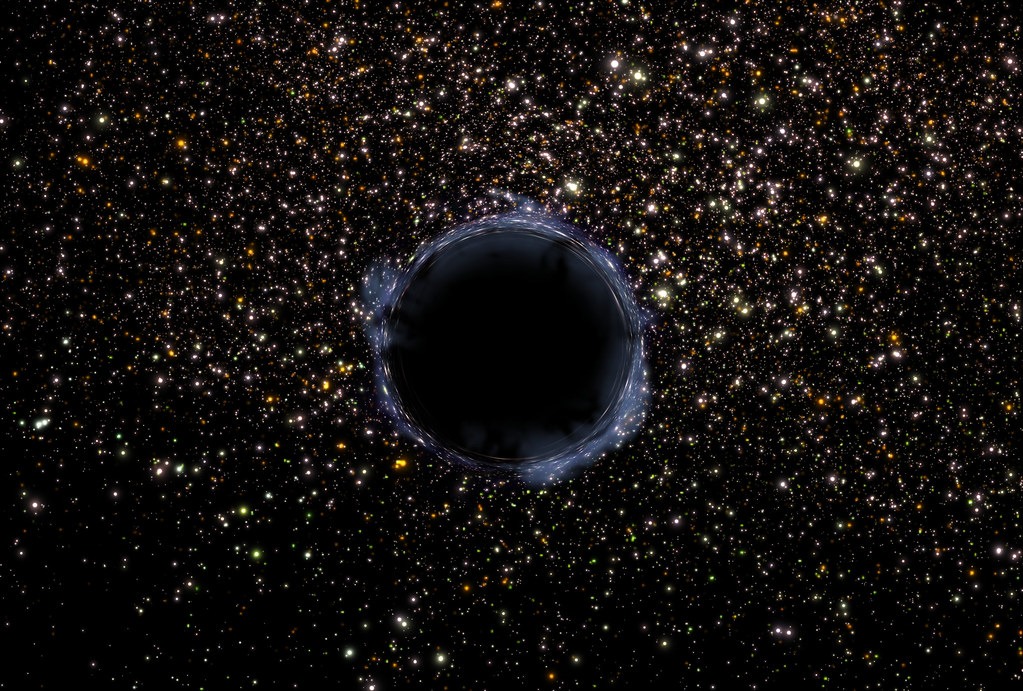Your neighborhood black hole just got seriously upstaged. Astronomers have spotted a cosmic behemoth weighing in at 36 billion solar masses—roughly 10,000 times more massive than Sagittarius A*, the supermassive black hole lurking at the center of our own Milky Way. This monster sits dormant in the heart of a galaxy 5 billion light-years away, possibly claiming the title of most massive black hole ever measured with high confidence.
The discovery comes courtesy of the famous “Cosmic Horseshoe”—that stunning Einstein ring you’ve probably seen in space photography where gravity bends light into a perfect cosmic smile. What makes this find remarkable isn’t just the sheer mass, but how researchers managed to weigh something so impossibly distant and dark.
Understanding these cosmic titans helps astronomers piece together how galaxies and their central black holes co-evolved over billions of years, revealing the violent merger-driven history that shaped the universe we see today.
A New Way to Weigh Giants
Researchers combined gravitational lensing with stellar motion tracking to measure this distant cosmic monster.
The team from University of Portsmouth and Brazil’s Federal University of Rio Grande do Sul pulled off something like cosmic forensics. They combined:
- Gravitational lensing data (how the black hole’s gravity warps space-time itself)
- Stellar kinematics (tracking how stars dance around the galaxy’s center)
Think of it as using both a scale and a speedometer to figure out what you’re dealing with.
This dual approach matters because most black holes this massive live too far away for traditional measurement methods. You can’t exactly point a telescope at something that doesn’t emit light and hope for the best.
The technique represents a significant breakthrough in long-distance astronomical measurements, offering unprecedented confidence in mass estimates at cosmic distances where previous methods struggled with accuracy.
When Galaxies Cannibalize
This ultramassive black hole likely grew by consuming smaller galaxies and their central black holes over billions of years.
Professor Thomas Collett, who led the study published in Monthly Notices of the Royal Astronomical Society, calls this black hole “amongst the top 10 most massive… and quite possibly the most massive” known to science. That’s not hyperbole—it’s approaching theoretical limits for how big these cosmic vacuum cleaners can actually get.
The size makes sense when you consider the galaxy’s likely history. LRG 3-757 appears to be what the research team associates with a “fossil group galaxy”—essentially a cosmic cannibal that devoured smaller neighbors over billions of years, merging their central black holes into this ultramassive monster.
This growth scenario explains how black holes can reach such extreme masses, transforming from stellar-mass objects into cosmic giants through galactic mergers and acquisitions that make corporate takeovers look quaint.
The Hunt Continues
Future space surveys could reveal an entire hidden population of dormant ultramassive black holes.
The technique could revolutionize how we find hidden giants. The team plans to apply their method to upcoming survey data from ESA’s Euclid mission, potentially revealing a whole population of dormant ultramassive black holes that have been hiding in plain sight.
These sleeping giants could fundamentally reshape our understanding of how matter and energy are distributed across the universe, offering new insights into the cosmic web’s architecture and the role of dark matter in galaxy formation.
Your universe just got a little more wonderfully terrifying—and a lot more mysterious.





























